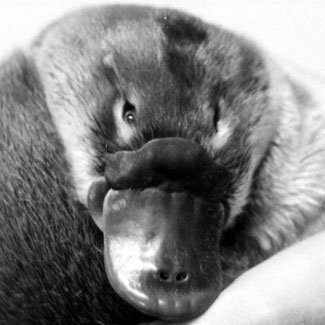Tough environment no barrier to platypus

A comprehensive survey into platypus health and population size in the NSW’s Murrumbidgee catchment area found that despite harsh conditions, platypuses continue to endure.
“This is the first study of the health of the platypus in the Murrumbidgee catchment,” commented Dr Joanne Connolly, a veterinary microbiologist at Charles Sturt University in Wagga Wagga. “We are interested to see how the platypus copes with drought and hope to pick a few populations along the Murrumbidgee [to study further].”
The Murrumbidgee population is important, because it is isolated from coastal populations by the Great Dividing Range. Most populations are found on the eastern seaboard from Cooktown all the way down to Tasmania, said Joanne. The western populations live in the Murray Darling Basin including the Murrumbidgee catchment.
“We potentially have different sub-populations of platypus; the east, the west and Tasmanian,” she said. “There is an evident separation of breeding populations.”

Juvenile platypus View Gallery
Joanne’s team led the new survey which looked into potential problems facing the species, including pollution, agriculture, irrigation and litter.
For the study, traps were laid to estimate population size and density. Last year the researchers spent 25 nights setting and collecting nets in 22 locations from the Kosciuszko National Park to Narrandera in NSW’s Riverina region.
The researchers then took body measurements, weight and blood samples from the 28 platypuses that they caught. Measuring the size of the tails was a focal point of the research, said Joanne, as platypuses store 40% of their body fat there, and it’s a key indicator of body condition and health.
The team also checked for parasites, such as ticks, and looked for infections such as that caused by the Leptospira bacterium. Leptospira, shed through urine, is common in livestock and rodents. In infected animals, symptoms may include jaundice, abortion, kidney disease or even death.
The researchers also tagged the creatures with tiny microchips to help with future identification.
Throughout its range, the platypus can be found in a variety of aquatic habitats, from pristine areas such as national parks, to farm dams and even suburban locales. The quality of the habitat is important to the survival of the species. While invasive species, such as the European carp, compete with the platypus for food, degradation of habitat is the biggest concern.
Platypuses need stable banks to build burrows so they don’t collapse in on them, Joanne said. “There is the threat of reducing water depth with the drought and [also] global warming which will raise water temperatures.” At this time of year water temperatures at some sites are up to 23°C, but with global warming, this will increase. According to Joanne, by about 25°C, the platypuses are subject to heat stress.
Prior to the current study no thorough survey had been completed of platypus populations in Murrumbidgee since the 1970s.
“We’ve relied on public sightings and the historical records of landholders along the Murrumbidgee, as well as records from the NSW National Parks and Wildlife Service, NSW Fisheries and ACT Parks and Reserves to inform us about potential platypus sites,” Joanne said. “With more funding we intend to revisit these sites more regularly and with the platypuses now microchipped, we will be able to track their continuing presence.”




